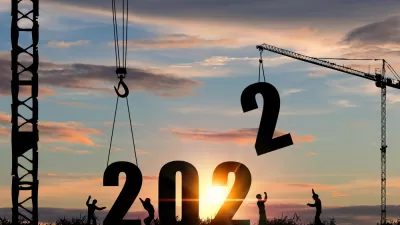Over the course of the year, the editors of Planetizen review and summarize thousands of articles, books, studies and editorials related to planning and urban development. Here are our picks for the most notable planning trends of the past year.

Building Resilience: Planning for Extreme Weather and Climate Change
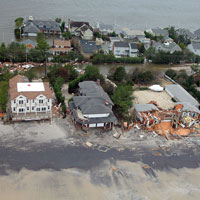 Long before October 29, 2012, planners, scientists, and engineers voiced their growing concerns over the effects of climate change: rising seas, hotter temperatures, historic droughts, and extreme storms. But when Hurricane Sandy once again turned America’s largest city into the setting for a real life disaster movie, and brought destruction to communities throughout the Northeast, climate change mitigation became a pressing topic in the minds of journalists, politicians, actuaries, and the public at large. The 60+ news items we posted related to the storm can attest to this.
Long before October 29, 2012, planners, scientists, and engineers voiced their growing concerns over the effects of climate change: rising seas, hotter temperatures, historic droughts, and extreme storms. But when Hurricane Sandy once again turned America’s largest city into the setting for a real life disaster movie, and brought destruction to communities throughout the Northeast, climate change mitigation became a pressing topic in the minds of journalists, politicians, actuaries, and the public at large. The 60+ news items we posted related to the storm can attest to this.
While New York has moved swiftly to ease the path to recovery, Sandy’s impact on America’s policies, priorities, planning and psyche will be felt for decades to come.
- 2/27/2013: N.J. Town Considers 'Radical Surgery' to Prevent Future Floods
- 2/26/2013: Should Architects Be Allowed to Assist in Disaster Recovery?
- 2/21/2013: Rebuild or Retreat? NY Pols Take Sides in Post-Sandy Debate
- 1/22/2013: Looking at History and Seeing a Grim Future for the World's Coastal Cities
- 1/21/2013: Building Storm Defenses While Turning a Profit
- 1/17/2013: Sandy Already Changing How Buildings are Designed in NYC
- 1/5/2013: Neighborhood Form and Extreme Weather Events
- 11/26/2012: NYC Studies How to Build Resiliency
- 11/10/2012: Will the Economics of Climate Change Alter the Politics?
- 11/7/2012: Sandy Provides Opportunity for NYC to Lead on Climate Adaptation
- 10/30/2012: Stunning Images Capture Sandy's Assault on NYC
- 9/11/2012: Is New York Doing Enough to Prepare for Rising Seas and Severe Storms?
- 8/22/2012: Rising Sea Levels Threaten Boston's Historic Treasures and Much Else
- 7/26/2012: Extreme Weather Threatens Infrastructure Across America
Too Ugly to Preserve: Brutalism Under Threat
 From Chicago’s Prentice Women’s Hospital to Orange County New York’s Government Center and Washington D.C.’s FBI Headquarters, 2012 was the year that the question of whether to preserve some of the recent past’s most notable buildings came to a head. As changing tastes challenge the notion of what’s worthy for preservation, a rousing debate has emerged as to whether the relics of a challenging, and little loved, phase of architectural history deserve to be saved, demolished, or reinvented for a new era. As more and more of the buildings from the period some prefer to call “Heroic” reach critical junctures in their lives, these debates will be sure to continue.
From Chicago’s Prentice Women’s Hospital to Orange County New York’s Government Center and Washington D.C.’s FBI Headquarters, 2012 was the year that the question of whether to preserve some of the recent past’s most notable buildings came to a head. As changing tastes challenge the notion of what’s worthy for preservation, a rousing debate has emerged as to whether the relics of a challenging, and little loved, phase of architectural history deserve to be saved, demolished, or reinvented for a new era. As more and more of the buildings from the period some prefer to call “Heroic” reach critical junctures in their lives, these debates will be sure to continue.
- 12/5/2012: GSA Proposes a Trade for D.C.'s Unloved Hoover Building
- 11/29/2012: Rudolph Renovation Shows How Far Brutalism Can Bend
- 10/29/2012: Too Ugly to Preserve?
- 8/10/2012: Chicago Preservationists Fight to Reuse Iconic Building
- 4/9/2012: Arguing the Case for Preserving Ugly Buildings
- 3/14/2012: Decision Nears Over Fate of a Brutalist Masterpiece
- 1/12/2012: Why Ugly Buildings Matter
Open Data Creates Civic App-ortunities
 The explosion in open data has caused a revolution in municipal management that the public and private sectors are just beginning to understand and leverage. On the one hand are city-led efforts to utilize their petabytes of digital data to improve operations, quality of life and interaction with constituents. On the other are so-called “civic hackers” seeking to increase transparency and accountability, or simply make better places.
The explosion in open data has caused a revolution in municipal management that the public and private sectors are just beginning to understand and leverage. On the one hand are city-led efforts to utilize their petabytes of digital data to improve operations, quality of life and interaction with constituents. On the other are so-called “civic hackers” seeking to increase transparency and accountability, or simply make better places.
- 1/14/2013: Are Apps the Answer to Oakland's Problems?
- 1/8/2013: Get to Know Your Neighborhood
- 12/13/2012: Philly Establishes New Office for Civic Innovation
- 9/14/2012: Cities Get Proactive About Citizen Gripes
- 8/27/2012: Gov 2.0 Gets Boost from 'Peace Corps for Geeks'
- 8/3/2012: 4 Major U.S. Cities Publish Data for All to See
- 7/19/2012: Chicago Crowdsources a Superior Transit App
- 5/2/2012: The High-Tech Urban Experience, Now Standardized
- 4/15/2012: Boston Delivers on Digital with Citizens Connect
- 3/19/2012: City Hacking Goes Mainstream
You Can’t Go Home Again: Housing Adapts to Demographic Change
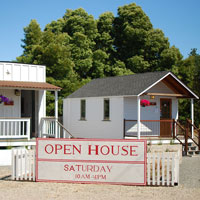 Houses are growing, while apartments are shrinking. Cities are hot, and the suburbs are not. As the housing industry sputters back to life after the Great Recession, profound shifts in America’s demographics and economic footings are leading to significant changes in the types of housing being built, and the locations favored by developers. The impending “silver tsunami”, the rise of “singletons”, and emergence of the Millennial Generation from their parents’ basements, are among the demographic trends spurring the growth of micro-apartments, multi-generational housing, and walkable urbanism.
Houses are growing, while apartments are shrinking. Cities are hot, and the suburbs are not. As the housing industry sputters back to life after the Great Recession, profound shifts in America’s demographics and economic footings are leading to significant changes in the types of housing being built, and the locations favored by developers. The impending “silver tsunami”, the rise of “singletons”, and emergence of the Millennial Generation from their parents’ basements, are among the demographic trends spurring the growth of micro-apartments, multi-generational housing, and walkable urbanism.
- 1/22/2013: Big Winner of Tiny Apartment Competition Unveiled
- 1/3/2013: Small Houses Find Big Following in Cascadia
- 11/30/2012: Builders Respond to Desire for Multigenerational Homes
- 11/28/2012: A Tiny-House Model Community Sprouts in D.C.
- 11/27/2012: Granny Pods Land in Virginia Backyards
- 11/22/2012: From 'Leave It to Beaver' to 'Modern Family'
- 9/11/2012: Detailing DC's Shift to Walkable Urbanism
- 9/10/2012: Is Downtown Any Place to Raise a Family?
- 9/5/2012: Aging Boomers Changing the Shape of Cities Across America
- 7/24/2012: Changing Suburban Demographics Collide With Outdated Zoning Laws
- 7/19/2012: San Francisco's 160-unit Micro-Apartment Building Seeks Approval
- 7/11/2012: Homebuilders Consider What Will Get Gen Y to Buy
- 7/6/2012: Living Alone? You're Not the Only One
- 5/17/2012: The Housing Market Revolution
Bypassing Washington Gridlock With Creative Funding Schemes
 With the federal government unable, or unwilling, to fund the projects necessary to keep America’s cities competitive in the global marketplace for employers, employees, investment and innovation, local governments are turning to novel sources for funds. Selling and leasing public assets, establishing infrastructure banks, charging users, partnering with the private sector, experimenting with social impact bonds, and asking voters to tax themselves are among the expanding field of creative funding tools being utilized to repair and rebuild our infrastructure and provide social services.
With the federal government unable, or unwilling, to fund the projects necessary to keep America’s cities competitive in the global marketplace for employers, employees, investment and innovation, local governments are turning to novel sources for funds. Selling and leasing public assets, establishing infrastructure banks, charging users, partnering with the private sector, experimenting with social impact bonds, and asking voters to tax themselves are among the expanding field of creative funding tools being utilized to repair and rebuild our infrastructure and provide social services.
- 3/19/2013: The Great Public Facility Sell-Off
- 1/14/2013: Paying by the Mile - Not a Question of "If" but "When and by How Much"
- 12/19/2012: Chicago for Sale
- 11/8/2012: Election Recap: How Did Smart Growth Fare?
- 10/29/2012: Who Will Pay for America's $2.2 Trillion Infrastructure Backlog?
- 9/5/2012: To Speed Up Transit Expansion, LA Turns Again to its Voters
- 8/2/2012: Can New York's Juvenile Jails Become a Cash Cow for Goldman Sachs?
- 7/26/2012: Pittsburgh Wants to Sell Out
- 4/24/2012: What Value Does An Infrastructure Bank Provide?
- 4/4/2012: New York Infrastructure Bank Begins Funding Projects, Just Days After Creation
- 3/20/2012: Cities Reach Out to Private Sector to Solve Fiscal Challenges
- 3/14/2012: Hard Lessons Learned in a Push to Privatize Parking
- 3/2/2012: Emanuel Unveils Economic Development Plan for Chicago - and Innovative Plan to Pay for It
- 1/28/2012: Federal Government to Explore Use of Social Impact Bonds
Streetcar Desire: Building Development-Oriented Transit
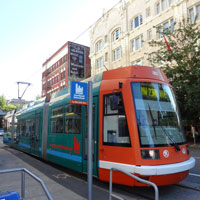 Before the era of the automobile, trolleys plied the streets of America’s cities, providing vibrant downtowns and growing suburbs with an efficient mode of public transportation. Until recently, these systems only lived on in the memories of the elderly and along abandoned rights-of-way.
Before the era of the automobile, trolleys plied the streets of America’s cities, providing vibrant downtowns and growing suburbs with an efficient mode of public transportation. Until recently, these systems only lived on in the memories of the elderly and along abandoned rights-of-way.
Over the past several years, however, following the lead of Portland, cities have returned to these relics of a bygone era as a transit alternative that’s easier and cheaper to build than subways, but sexier than buses. Recognizing their limitations in speeding circulation, cities are looking to streetcars as development tools first, and transportation systems second.
- 2/17/2013: Streetcars: The Latest Must-Have Accessory for CA's Cities
- 12/15/2012: Next Stop for Kansas City Streetcar: Construction
- 9/23/2012: How Zoning Might Make or Break New Streetcar Lines
- 8/15/2012: Desire for Streetcars Spreads Across America
- 7/6/2012: Building a 'Slow' Streetcar to 'Speed' Development
- 4/21/2012: OK City Gives Car-Free Mobility a Chance
- 2/26/2012: The Growing Attraction of Historic Streetcars
- 1/30/2012: Return of Streetcars to D.C. Brings Nostalgia
Bike Battles Heat Up
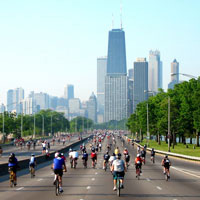 With ambitious bike master plans, citywide bike-share systems, and miles of new protected bike lanes, the race is on to catch Copenhagen and Amsterdam as bike capitals of the world. A race, by the way, made all the more difficult by the fact that the northern European capitals aren't standing pat.
With ambitious bike master plans, citywide bike-share systems, and miles of new protected bike lanes, the race is on to catch Copenhagen and Amsterdam as bike capitals of the world. A race, by the way, made all the more difficult by the fact that the northern European capitals aren't standing pat.
From car-crazy Los Angeles to snowy Montreal and sprawling Atlanta, cities are embracing the bike as a tool for economic development and easing congestion, and are expanding their infrastructure to attract jobs and Millennials.
- 3/8/2013: Boris Backs Bikes with $1.4 Billion Infrastructure Plan for London
- 3/7/2013: Chaining Bicycles to Economic Development
- 3/6/2013: Bike-Oriented Development Sprouts in Portland
- 2/21/2013: Seattle and Chicago Mayors Bicker Over Bikers
- 1/28/2013: How an Honorable Elbow Led to One City's Bicycle Revolution
- 1/27/2013: Two Wheels, Four Seasons: Winter Cycling in Montreal
- 1/20/2013: Atlanta Dedicates $2.5 Million to Bicycle Projects in 2013
- 1/1/2013: Memphis Pedals Cycling as Economic Salve
- 11/13/2012: Amsterdam Adds to Its Embarrassment of Bicycle Riches
- 10/25/2012: Transit Improvements Boost Business in NYC
- 9/10/2012: Cycling Renaissance Races Across America
- 8/11/2012: Is Latin America the Next Biking Paradise?
- 8/2/2012: Minnesota Courting Bicyclists' Billion-Dollar Business
- 7/19/2012: Copenhagen Shames Aspiring Bike Cities, Again, With Opening of Superhighway
Top Planning Issues of Past Years
Take a look back at the top issues from past years and compare with this year's list to see the most pervasive trends in urban planning.

Alabama: Trump Terminates Settlements for Black Communities Harmed By Raw Sewage
Trump deemed the landmark civil rights agreement “illegal DEI and environmental justice policy.”

Planetizen Federal Action Tracker
A weekly monitor of how Trump’s orders and actions are impacting planners and planning in America.

The 120 Year Old Tiny Home Villages That Sheltered San Francisco’s Earthquake Refugees
More than a century ago, San Francisco mobilized to house thousands of residents displaced by the 1906 earthquake. Could their strategy offer a model for the present?

Opinion: California’s SB 79 Would Improve Housing Affordability and Transit Access
A proposed bill would legalize transit-oriented development statewide.

Record Temperatures Prompt Push for Environmental Justice Bills
Nevada legislators are proposing laws that would mandate heat mitigation measures to protect residents from the impacts of extreme heat.

Downtown Pittsburgh Set to Gain 1,300 New Housing Units
Pittsburgh’s office buildings, many of which date back to the early 20th century, are prime candidates for conversion to housing.
Urban Design for Planners 1: Software Tools
This six-course series explores essential urban design concepts using open source software and equips planners with the tools they need to participate fully in the urban design process.
Planning for Universal Design
Learn the tools for implementing Universal Design in planning regulations.
Clanton & Associates, Inc.
Jessamine County Fiscal Court
Institute for Housing and Urban Development Studies (IHS)
City of Grandview
Harvard GSD Executive Education
Toledo-Lucas County Plan Commissions
Salt Lake City
NYU Wagner Graduate School of Public Service




























